
|
Scientific Enlightenment Book 2: Human Enlightenment of the First Axial 2.D.1. The Example of The Yijing Metaphysics of Sung Dynasty, China Chapter 3 ACADEMY | previous section | Table of Content | next section | GALLERY |

|
Scientific Enlightenment Book 2: Human Enlightenment of the First Axial 2.D.1. The Example of The Yijing Metaphysics of Sung Dynasty, China Chapter 3 ACADEMY | previous section | Table of Content | next section | GALLERY |
copyright © 2003, 2005, 2006 by Lawrence C. Chin. All rights reserved.

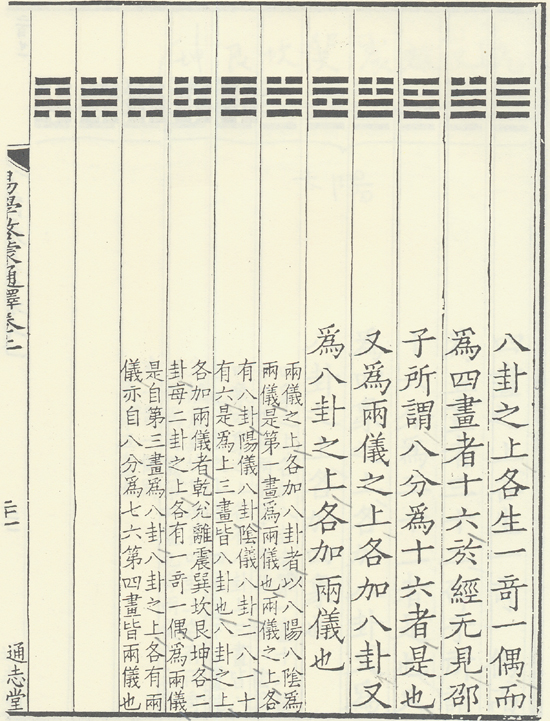
| On top of the eight Guas (trigrams) are born one odd and one even so as to have, now, the tetragrams, totaling 16 of them. They are not seen in the classics. What Zhao-Zi meant by 8 divided into 16 refers to this. Another [way] to derive this is by adding the 8 trigrams on top of the 2 Yis; or by adding the 2 Yis on top of the 8 trigrams. |
In the commentary the principle of Ng = 2n is repeated: on each of 2 Yis add 2 Yis; on each of trigrams add 2 Yis, and so on. Now the next level:
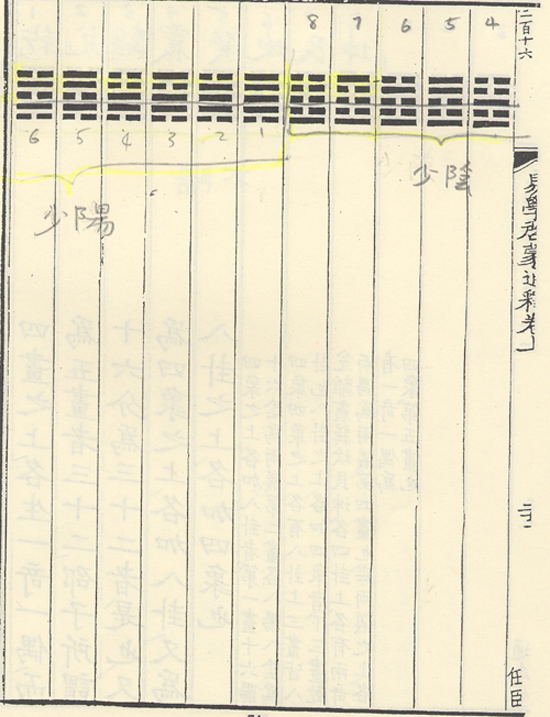
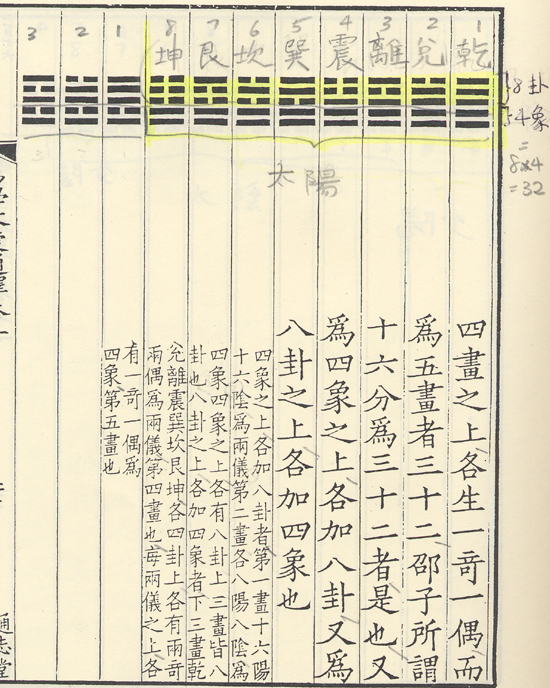
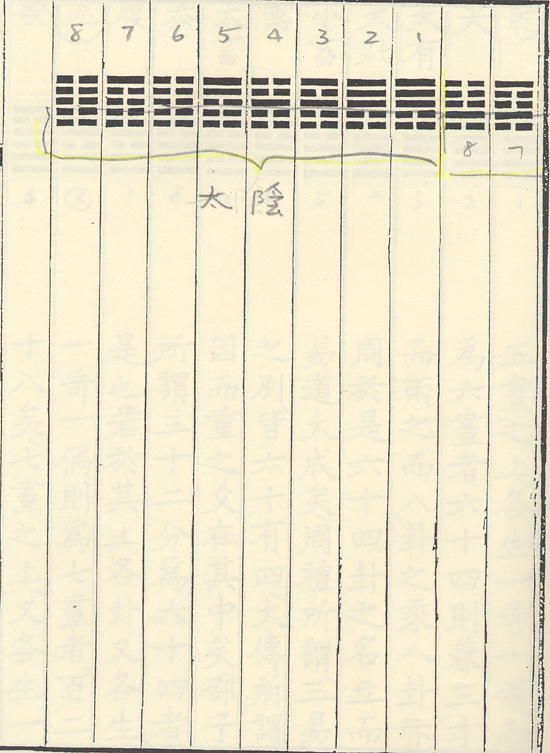
| On top of the tetragrams are born one odd and one even so as to have, now, the pentagrams, totaling 32 of them. What Zhaozi meant by 16 divided into 32 refers to this. Another [way to derive this is]: adding the 8 Guas on top of the 4 Hisans or adding the 4 Hisans on top of the 8 Guas. |
As is marked on the facsimile, the derivation of the -grams on the next level from all possible combinations of the -grams on the current level with the basic Ying and Yang to produce the finer constituents of cosmogony has here shown the clear pattern of the 4 duo-grams or Hsians (the bottom 2 strokes) on top of each of which are repeated the 8 trigrams or Guas (the upper 3 strokes marked yellow). Every set of 8 then corresponds, in terms of their bottom base, to one of the 4 Hsians: (from right to left) Ultra Yang, with Qian (1), Dui (2), Li (3), Zhen (4), Xun (5), Kan (6), Gen (7), and Kun (8) on top of it; Lesser Ying, with the same; Lesser Yang, with the same; Ultra Ying, with the same.
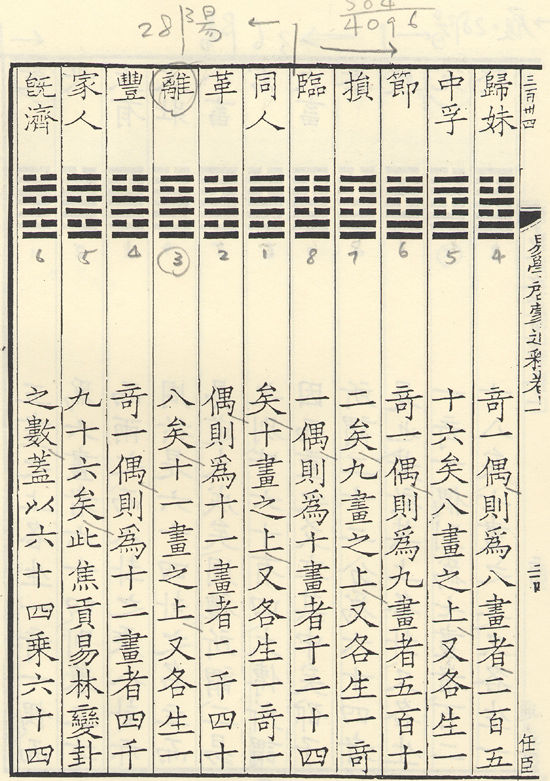
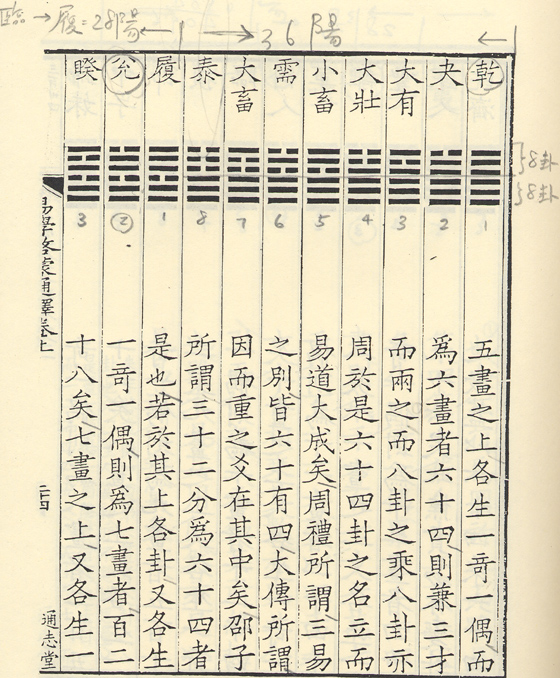
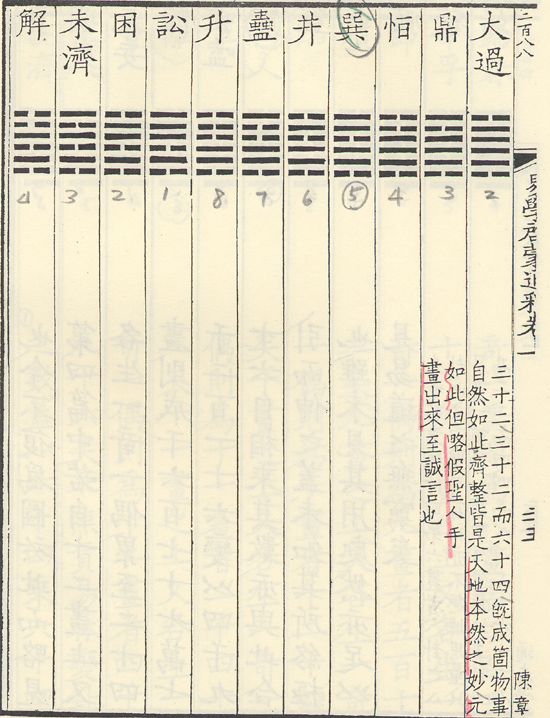

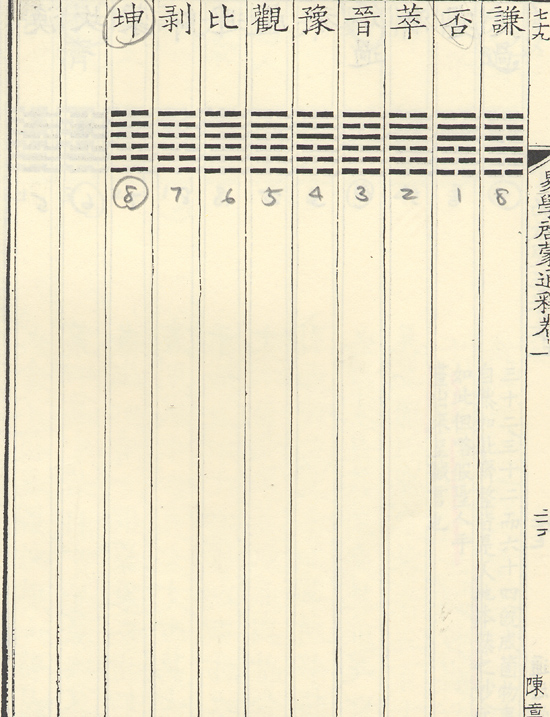
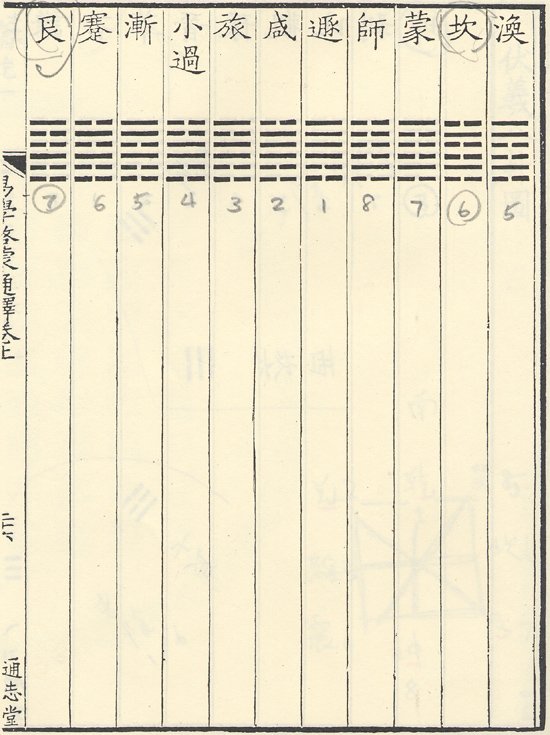
| On top of the pentagrams are born one odd and one even so as to have, now, the hexagrams, totaling 64 of them, which hence incorporated the 3 Tsais (才) but 2 sets of these [i.e. 3 x 2 = 6: the hexagrams]. Also, the multiplication of 8 Guas [hexagrams] by 8 Guas [hexagrams] is encompassingly [complete] so that the name of 64 hexa]grams is set thusly and the Dao of Yi [Dao of Change] greatly [i.e. comprehensively] established. What the Rite of Zhou refers to as the distinction of the three Yis [Changes] having 64, and what the Da-Zhuang [The Great Book] refers to as the repetition of the strokes, all reside herein. What Zhaozi refers to as the division of 32 into 64 also is this. If there be born one odd and one even on top of each hexagrams then we will have grams of 7 strokes, totaling 128 of them. If there be born one odd and one even on top of those of 7 strokes then we will have those of 8 strokes totaling 256 of them. If there be born one odd and one even on top of those with 8 strokes then we would have those with 9 strokes totaling 512 of them. If there be born one odd and one even on top of those with 9 strokes then we would have those with 10 strokes totaling 1024 of them. If there be born one odd and one even on top of those with 10 strokes then we would have those with 11 strokes totaling 2048 of them. If there be born one odd and one even on top of those with 11 strokes then we would have those with 12 strokes totaling 4096 of them. This number of... is obtained by 64 x 64. At this moment we do not repeat here the effort of their diagrammatization but shall see them in section 4. If there be born one odd and one even on top of those with 12 strokes, until this process arrives at those with 24 strokes, they would total 16,777,216 [i.e. 224 = 16,777,216]. This is obtained by 4096 multiplying itself. This also agrees with those [previous], merely extending what is already there. Hence we do not see the end of it. Although we don't see their uses here, they suffice to demonstrate the inexhaustiblility of the Dao of Yi [Change]. |
This completed derivation of all 64 hexagrams, like the pentagrams above, has each of the 8 hexagrams as the base on the bottom, on top of which is repeated all of another hexagramic set, hence 8 x 8 = 64. This is the complete set of hexagrams as found in the Book of Change (Yijing or Zhou Yi). Note that the names of the eight trigrams appear here in this complete set of cosmogonic constituents. Qian appears as the first of the first set of 8 hexagrams, simply two of it one on top of the other. Dui
as the second of the second set, simply two of it one on top of the other. Li
as the third in the third set, simply two of it one on top of the other. Zhen
as the fourth in the fourth set, simply two of it one on top of the other. Xun
as the fifth in the fifth set, simply two of it one on top of the other. Kan
as the sixth in the sixth set, simply two of it one on top of the other. Gen
as the seventh in the seventh set, simply two of it one on top of the other. Kun
as the eighth in the eighth set, simply two of it one on top of the other.
The derivational formula Ng = 2n can receive the diagrammatic representation:
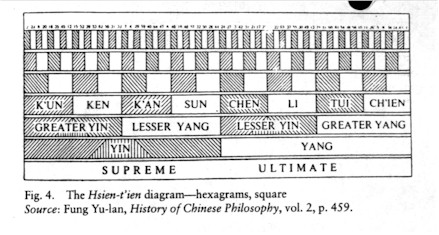
| ACADEMY | previous section | Table of Content | next section | GALLERY |